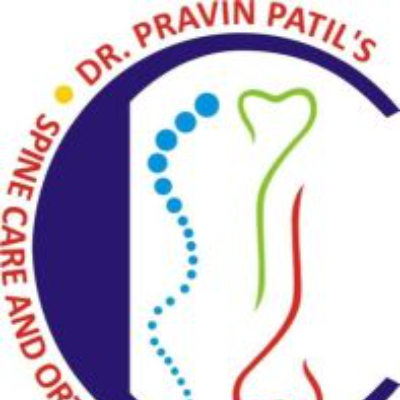+918048053745

This is your website preview.
Currently it only shows your basic business info. Start adding relevant business details such as description, images and products or services to gain your customers attention by using Boost 360 android app / iOS App / web portal.
Arthroscopy - ACL, PCL, meniscus, Rotator cuff repair, Bankart's repair, Latarjet Procedure
Description
Arthroplasty, commonly known as joint replacement surgery, is a procedure to restore the function of a joint. A damaged joint is replaced with an artificial implant, which can be made of metal, plastic, or ceramic. Arthroplasty is most commonly performed on the hips and knees but can also involve the shoulders, elbows, wrists, and ankles. ### Indications for Arthroplasty: - *Severe Osteoarthritis*: Leading cause, causing significant pain, stiffness, and reduced mobility. - *Rheumatoid Arthritis*: Chronic inflammation leading to joint damage. - *Post-Traumatic Arthritis*: Joint damage following an injury. - *Avascular Necrosis*: Bone tissue death due to lack of blood supply. - *Congenital Conditions*: Joint deformities present from birth. - *Failed Conservative Treatments*: When medications, physical therapy, and lifestyle changes no longer provide relief. ### Common Types of Arthroplasty: 1. *Hip Arthroplasty (Hip Replacement)*: - Total Hip Replacement (THR): Replaces the entire hip joint. - Partial Hip Replacement: Replaces only the damaged part of the hip joint. 2. *Knee Arthroplasty (Knee Replacement)*: - Total Knee Replacement (TKR): Replaces the entire knee joint. - Partial Knee Replacement (PKR): Replaces only the damaged compartment of the knee. 3. *Shoulder Arthroplasty (Shoulder Replacement)*: - Total Shoulder Replacement: Replaces the entire shoulder joint. - Reverse Shoulder Replacement: Alters the normal structure to improve function in cases of severe rotator cuff damage. 4. *Elbow Arthroplasty (Elbow Replacement)*: Typically performed for severe arthritis or complex fractures. 5. *Ankle Arthroplasty (Ankle Replacement)*: Used to treat severe arthritis in the ankle. 6. *Wrist and Finger Arthroplasty*: Performed for severe arthritis or injury in smaller joints. ### The Procedure: - *Pre-Surgery*: - Comprehensive evaluation including medical history, physical examination, and imaging tests. - Preoperative instructions such as fasting, stopping certain medications, and preparing the home for recovery. - Discussions about the risks, benefits, and expected outcomes of the surgery. - *Surgery*: - *Anesthesia*: General or regional. - *Procedure*: The damaged joint surfaces are removed and replaced with prosthetic components. The surgery duration varies based on the joint and complexity but typically lasts between 1 to 2 hours. - *Post-Surgery*: - *Hospital Stay*: Usually 1-3 days depending on the surgery and patient’s health. - *Pain Management*: Medications, and possibly nerve blocks, are used to control pain. - *Physical Therapy*: Begins shortly after surgery to aid in recovery, improve range of motion, and strengthen muscles. - *Activity Restrictions*: Specific guidelines to avoid stress on the new joint. ### Recovery: - *Short-Term*: Initial recovery focuses on pain management, wound care, and starting physical therapy. - *Medium-Term*: Ongoing physical therapy for several weeks to months to regain strength and mobility. - *Long-Term*: Full recovery can take up to a year. Most patients can resume normal activities, though high-impact activities may be limited. ### Risks and Complications: - *Infection*: At the surgical site. - *Blood Clots*: Risk of deep vein thrombosis (DVT) or pulmonary embolism. - *Implant Issues*: Loosening, wear, or dislocation of the prosthesis. - *Nerve or Blood Vessel Damage*: Rare but possible. - *Persistent Pain*: Some patients may experience ongoing pain. - *Stiffness*: Limited range of motion post-surgery. ### Outcomes: - *Pain Relief*: Significant reduction or elimination of joint pain. - *Improved Function*: Enhanced ability to perform daily activities. - *Prosthesis Longevity*: Modern joint replacements can last 15-20 years or longer, depending on activity levels and overall health. ### Lifestyle Adjustments Post-Surgery: - *Regular Exercise*: Engage in low-impact activities like walking, swimming, and cycling. - *Weight Management*: Maintain a healthy weight to reduce stress on the new joint. - *Avoid High-Impact Activities*: Limit activities like running or jumping to prolong the life of the prosthesis. Arthroplasty can significantly improve the quality of life for individuals with severe joint pain and disability. Working closely with your healthcare provider to understand the procedure, manage expectations, and diligently follow postoperative care and rehabilitation guidelines is essential for a successful outcome.

